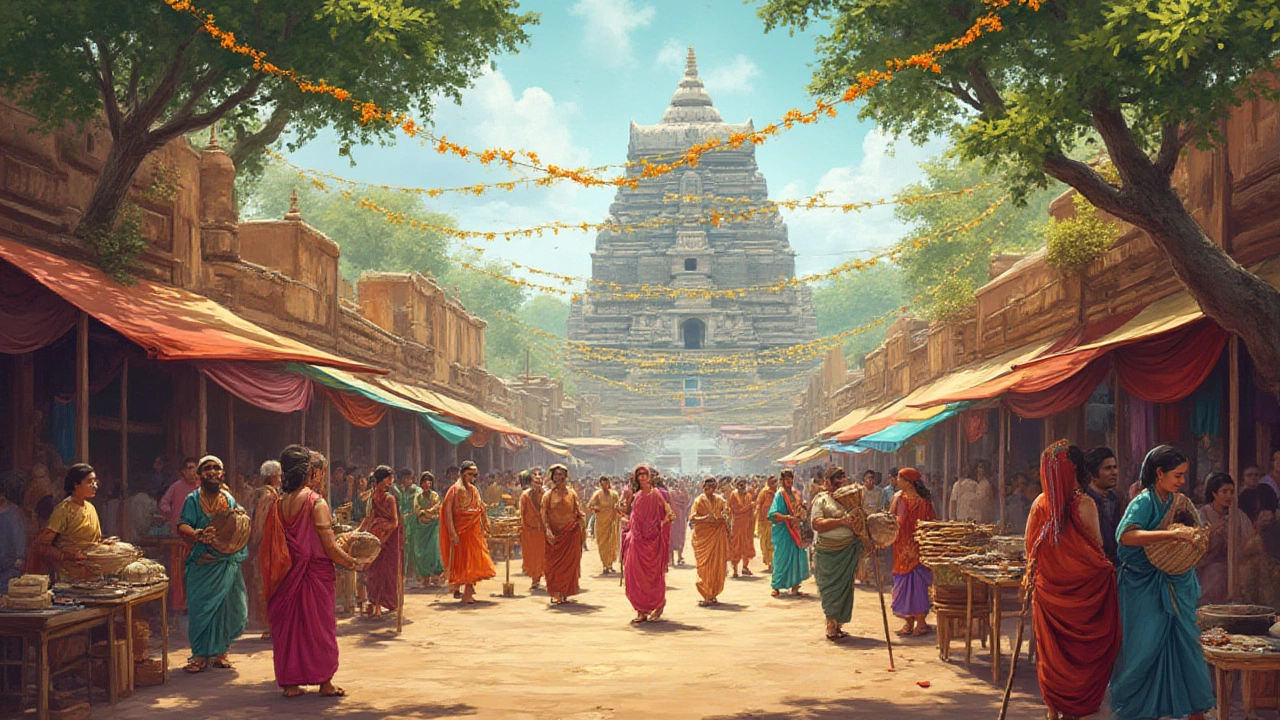
Top Examples of Cultural Tourism in India: Famous Experiences & Unique Traditions
Explore how cultural tourism in India brings you close to living heritage, colorful festivals, traditional crafts, ancient temples, and regional food adventures.
If you love travel that goes beyond sights and dives into the way people live, India is the perfect playground. From bustling markets to quiet temples, every corner offers a story you can feel, taste, and hear. This guide gives you straight‑forward tips so you can jump right into the real Indian culture without getting lost in clichés.
When you focus on culture, you’re not just checking boxes – you’re connecting with locals. A simple hello in Hindi, a shared meal of dhokla, or watching a folk dance in a village hall can change how you see the world. These moments also support artisans, chefs, and performers who keep traditions alive. In short, every cultural experience you have helps keep India’s heritage thriving.
1. Festival Fever – India’s calendar is packed with events. Whether it’s the colorful Holi in North India, the rhythmic dance of Navratri in Gujarat, or the awe‑inspiring Pushkar Camel Fair, each festival offers a mix of music, food, and rituals you won’t find anywhere else. Arrive a day early to soak in the preparation and get a chance to chat with locals.
2. Street Food Tours – Forget fancy restaurants for a moment. Walk through the lanes of Delhi’s Chandni Chowk, Kolkata’s College Street, or Ahmedabad’s Manek Chowk. Try chaat, puchka, and a steaming plate of Gujarati thali. Street vendors love to share the story behind each dish, so ask them why they use a particular spice.
3. Heritage Walks – Cities like Jaipur, Mysore, and Chennai have heritage walks led by local guides. You’ll see forts, palaces, and hidden courtyards while learning how each structure ties to a historic event or family tradition. Many walks end at a local tea stall, letting you practice a few new Hindi words.
4. Handicraft Workshops – From block printing in Rajasthan to pottery in Bengal, workshops let you create something with your own hands. Most artisans offer short sessions where you can make a small piece and learn why a certain pattern or colour matters to their community.
5. Rural Homestays – Spending a night in a village gives you a peek into daily life that hotels can’t match. You’ll share meals prepared from the garden, hear stories around a fire, and maybe even join a local prayer. Book through reputable sites that respect the hosts and pay fair wages.
Planning your trip? Start by picking a region that matches the cultural vibe you crave. The North offers grand festivals and mountain villages, while the South shines with classical dance, temple art, and spice‑laden cuisine. Keep travel dates flexible; many festivals shift according to the lunar calendar.
When you travel, remember to pack light, bring a reusable water bottle, and learn a few polite phrases like “Namaste” and “Dhanyavaad.” Respect local customs – remove shoes before entering homes or temples, and dress modestly when visiting religious sites.Finally, document your experiences but don’t let the camera steal the moment. A quick note in a travel journal or a voice memo can capture the taste of a dish or the rhythm of a drum better than any photo.
India’s cultural tourism is a treasure chest that opens up with curiosity and respect. Follow these tips, stay open‑minded, and you’ll walk away with more than souvenirs – you’ll carry stories that stay with you forever.

Explore how cultural tourism in India brings you close to living heritage, colorful festivals, traditional crafts, ancient temples, and regional food adventures.